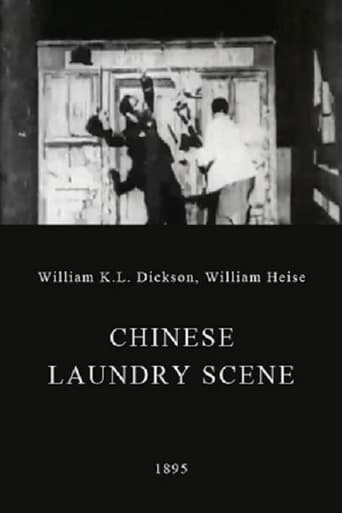wajiharaza
1894 FIRST FILM Chinese Laundry (or the Pursuit of Hop Lee by an irate policeman). (1894). Edison Kinetoscope Film. Directors: William K.L. Dickson, William Heise. Cast: Robetta, Doretto.The title appears in the Maguire and Baucus catalog of 1897, where it is described as the "Pursuit of Hop Lee by an irate policeman", an old vaudeville act. Maguire and Baucus were the London agents for the Kinetoscope. While "Chinese Laundry" is their first silent film, William Heise first filmed/Takes/Shots include "Monkey Shines, No. 1 in 1890 and William K.L. Dickson's "Newark Athlete" in 1891.Reference: Iris Barry, Eileen Bowser, Gary Carey, Alistair Cooke, Richard Griffith, Arthur Knight, & Donald Richie. (n. d.). Silent Films. NY: Museum of Modern Art and the United States Information Agency.
Horst in Translation ([email protected])
It only runs for around 15 seconds and is among the shortest works of Dickson and Heise. There's quite a lot action in it though, much more than in their films that show artists, dancers or athletes. One guy chases another. Revolving door hilarity ensues and the hunted, who seems to be quite athletic, climbs up. In order to hide? Nope. He provokes the other further by throwing an unknown object at him and he succeeds as it hits him. There's no further story about the two, if it's serious or all fun and if it's worth watching, then for being so different compared to the directors' other works. Beyond that, it's only a good choice for silent film enthusiasts.
cricket crockett
. . . and Native Americans and Jewish folks anymore, as "chinamen" get skewered in pieces such as this, as well (even if the actors' names sound as Italian as pizza pie). Reared in that racist hotbed the U.S. Congress lumped in with the Confederate South for Voting Rights Act remediation (due to bombed-out school buses)--that is, Southeast Michigan--Thomas Alva Edison had a little warning light bulb go off in his brain whenever he saw, thought of, or got on an elevator with American minority people. So even if this tawdry CH!NESE LAUNDRY SCENE played in other more fleeting venues, no one held a gun to old Tom E.'s head, forcing his henchmen to film such despicable fare for all posterity. T. Alva could have had them out recording Queen Victoria's tea parties, the invention of automobiles, or major league baseball games BEFORE the steroids era. He could have documented early BASKETball games, when the ball was shot into an actual basket by 5' 4" guys. But no, he had to beat Fatty Arbuckle, Lenny Bruce, Andrew Dice Clay, Adam Sandler, and the Jackass crew to the punch below America's belt, always aiming for the cheap laugh and the quick buck, no matter how low and dirty!
Snow Leopard
This is probably a rather typical example of the many early movies that were based on popular vaudeville acts of the 1890s. It is, honestly, not really all that entertaining, but it is still of some interest, in that the more of these early features you can watch, the better that you can understand the techniques, subject matter, and standards of the very earliest film-makers."Robetta and Doretto" were a popular slapstick act on vaudeville at the time that this movie was made, and it films one of their typical routines, an altercation between a Chinese laundry worker and an Irish police officer. The characters are stock vaudeville types, and the setting likewise is a stagy-looking representation of a storefront. Even the actors' names are mere stage names, calculated to make the performers sound more interesting.The act itself would probably have been a bit more enjoyable if seen live, when color and sound effects could accompany the slapstick action. Later in cinema history, film-makers would learn how to design slapstick routines that made better use of the capabilities of the silent screen. Early features such as this one are not all that interesting in themselves, but they were a first step in the eventual development and refinement of motion picture comedy.
